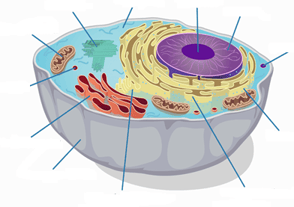Introduction to a Cell
Introduction to a Cell: Overview
This topic covers concepts such as Blood Cells, Discovery of the Cell, Unicellular Organisms, Multicellular Organisms, Shapes of Cells, Animal Cell, Cell, Plant Cell, Stomata, etc.
Important Questions on Introduction to a Cell
Living organisms are made up of cells.
A cell is the structural and _____ unit of living organisms.
Identify and illustrate parts of the cell.
Name the labelled part in the diagram given below.

Why blood is called a connective tissue?
With the help of examples, describe how cells vary in numbers, shapes and sizes.
A single cell is found in unicellular organisms.
Which among the following is a unicellular organism?
Name some organisms whose body is made up of only single cell.
Which type of cell will have more mitochondria, a muscle cell or a bone cell?
Do you think that an individual cell is living? Explain your answer.
Draw a labelled diagram of the animal cell?
The shape and size of a cell are related to its _____. (structure/function)
Write the full name of the scientist.
_____ discovered cells.
Which among the following is/are animal cell(s)?
Which organism is more efficient in its functioning and why—unicellular or multicellular?
Write a short account of the discovery of cells by Robert Hooke.
Change one word to make the sentence true.
Cell wall is the outermost layer of an animal cell.
Amoeba and Paramecium are _____ organisms. (unicellular/multicellular)
Name any two multicellular organisms.
